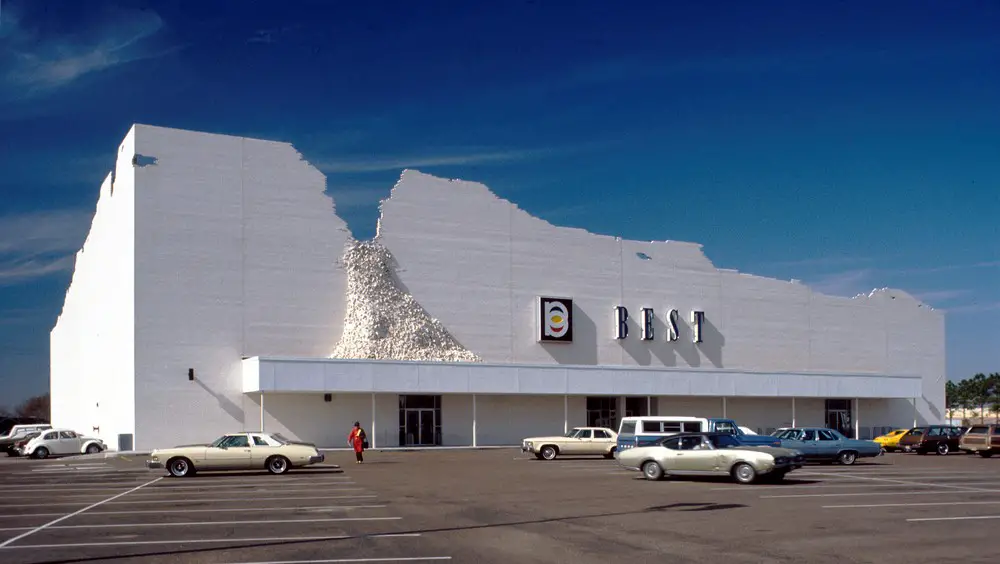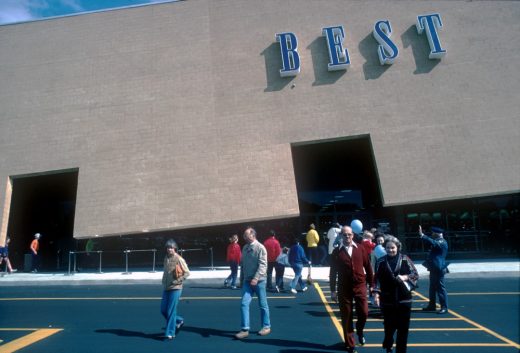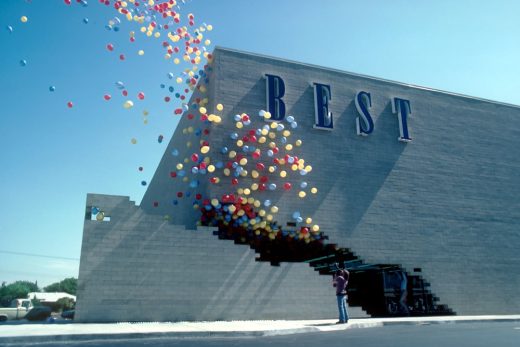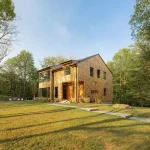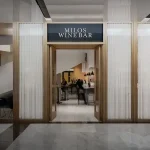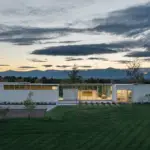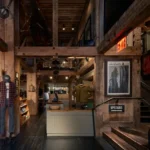Architecture needed to be liberated from itself, James Wines sculptural architecture, SITE US building photography
Architecture Needs to be Liberated from itself
Aug 24, 2023
A Video Interview with James Wines
By Vladimir Belogolovsky
Architectural Studio: SITE (Sculpture In The Environment)
On August 10, 2022, James Wines, a New York architect and environmental artist and founder of SITE, sat down with critic Vladimir Belogolovsky to discuss his iconic works: Ghost Parking Lot (Hamden, CO, 1977), Highrise of Homes (theoretical project, 1981), and, in detail, nine stores he designed and built across America from 1972 to 1984.
James Wines Video Interview: "Architecture needed to be liberated from itself:
Architecture Needs to be Liberated from itself – SITE USA
As mentioned in our recent interview with James Wines, the Indeterminate Façade Building, built in suburban Houston in 1974, appeared in more books on 20th-architecture than photos of any other modern structure. The iconic building was commissioned by Sydney and Frances Lewis, prominent art collectors and the founders of BEST, a chain of American catalog showroom retail stores from 1957 to 1997. At its peak, the company maintained 169 showrooms in 23 states. The Lewises commissioned Wines’s practice SITE to design about a dozen of their stores.
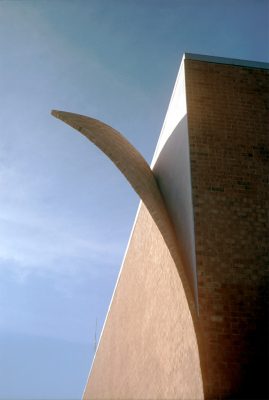
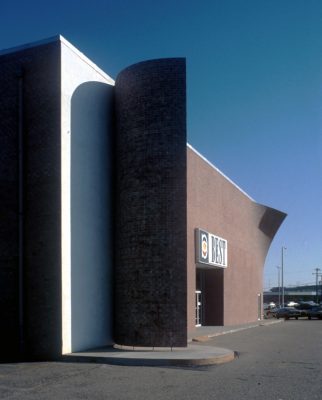
BEST Peeling Building (Richmond, VA, 1972)
Nine of these experimental buildings were realized: Peeling Building (Richmond, VA, 1972), Indeterminate Façade (Houston, TX, 1974), Tilt Building (Towson, MD, 1976), Notch Building (Sacramento, CA, 1977), BEST Anti-sign Building (Richmond, VA, 1978), Cutler Ridge Showroom or “Jigsaw Puzzle” building (Miami, FL, 1979), Rainforest Building (Hialeah, FL, 1979), Forest Building (Richmond, VA, 1980), and Inside/Outside Building (Milwaukee, WI, 1984).
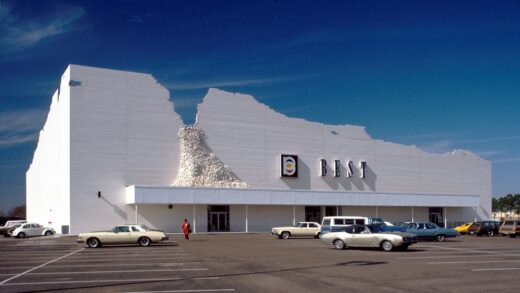
BEST Indeterminate Facade (Houston, TX, 1974)
Unfortunately, out of nine built BEST stores only one, Forest Building in Richmond, Virginia, remains standing, and even that changed drastically. Nevertheless, these now demolished structures are ingrained in our collective memory.
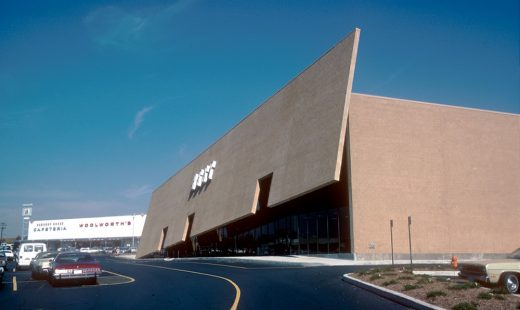
BEST Tilt Building (Towson, MD, 1976)
These buildings introduced and shocked the world with many of the architect’s revolutionary ideas. Their unorthodox facades quite literally displaced people’s expectations and assumptions about the nature of architecture, shopping, and suburbia. Wines turned his buildings into remarkable works of art that provoked conversations, questioning, amusement, as well as misunderstanding, and even protests.
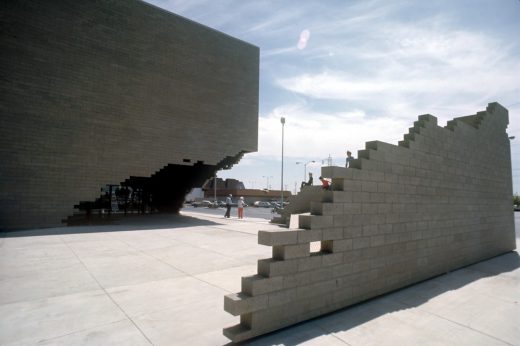
BEST Notch Building (Sacramento, CA, 1977)
James Wines was born in 1932 in Oak Park, Chicago. He studied sculpture and graduated from Syracuse University in 1956. For over a decade, before founding his environmental practice, SITE (Sculpture In The Environment) in 1970, Wines worked as a successful sculptor and graphic designer producing abstract constructivist works made of concrete and steel. He had a change of heart, influenced by discussions with his fellow artists, including Frederick Kiesler and Gordon Matta Clark who were much more fascinated by the building process, not the finished form sitting on a pedestal. In our 2016 interview, Wines told me, “SITE’s work is about inversion, fusion, intervention, exaggeration—often just taking something apart and examining the elements of construction from a different point of view.”
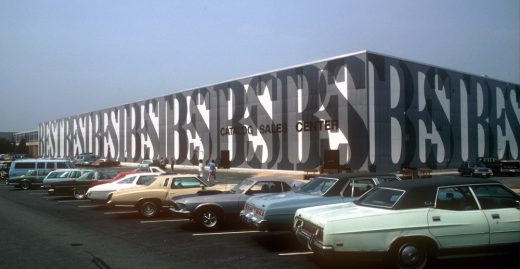
BEST Anti-sign (Richmond, VA, 1978)
The architect is a great provocateur whose unconventional work disjointed the idea of architecture as a style. His work changed the course of architecture by freeing it from all kinds of dogmas. SITE’s architecture provokes ideas of hybridization. James Wines treats architecture as a form of critique and a platform for continuous discourse. By the very act of placing art where people least expect to find it, he taught us how to be more observant, curious, and critical of our everyday environment. Wines brought a rebellious attitude to the profession and his efforts expanded architecture by making buildings more artistic, imaginative, process-oriented, open-ended, integrated with nature, and, of course, more fun to explore.
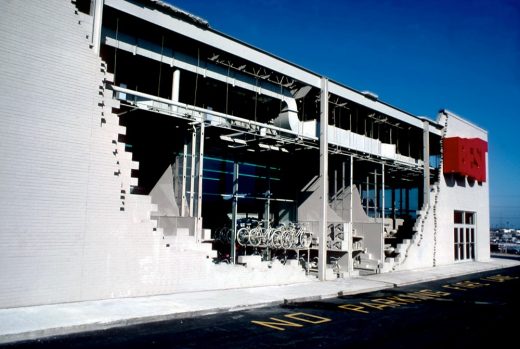
BEST Inside Out (Milwaukee, WI, 1984)
Even at the age of 91, Wines remains active by taking on new design projects and, with the help of Zoom, as well as in person, lectures widely. He is world-famous for such projects as Ghost Parking Lot (Hamden, CO, 1977), Highrise of Homes (theoretical project, 1981), Highway 86 (Vancouver, Canada, 1986), Shake Shack (Union Square, Manhattan, 2004), Fondazione Pietro Rossini Pavilion (Briosco, Italy, 2008), and Off-White Showroom for Virgil Abloh (Ginza, Tokyo, 2021). Yet, it is his BEST stores that are most widely talked about.
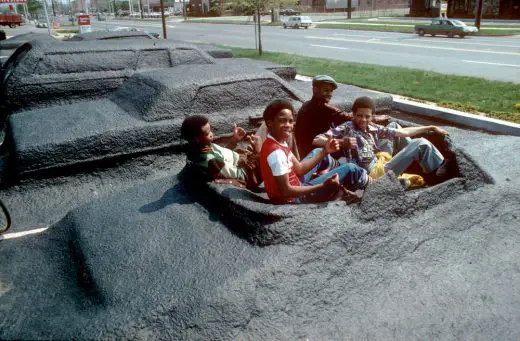
Ghost Parking Lot (Hamden, CO, 1977)
In one of my previous interviews with Wines, the artist summarized the essence of his practice in a single phrase, “The point is to attack architecture!” In our most recent conversation with James Wines that follows, apart from the ideas behind his BEST stores, we discussed the transition from abstract form-making early on to his interest in environmental art, artists and architects who influenced his thinking the most, why humor should be part of the profession, about being at odds with the professional architectural community all his life, and his firm conviction that architecture needs to be liberated from itself.
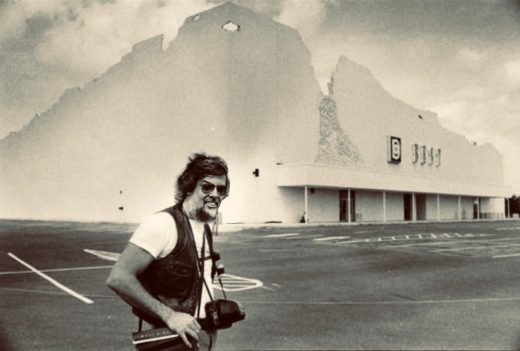
James Wines at Indeterminate Facade building
Architecture Needed To Be Liberated From Itself images / information received 240823
Moynihan Train Hall, New York
Architects: SOM
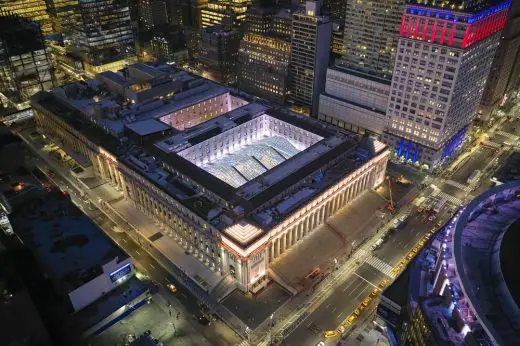
photo © Lucas Blair Simpson | Aaron Fedor © SOM
Designed by SOM, the Moynihan Train Hall completely reimagines the travel experience at the busiest transportation hub in the Western Hemisphere, and evokes the architectural heritage of New York’s original Pennsylvania Station.
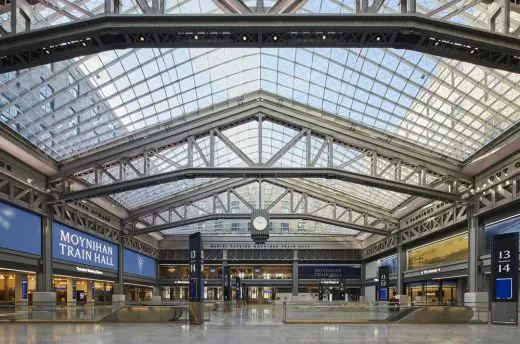
photo : Lucas Blair Simpson © SOM
Moynihan Train Hall in New York, USA – Building Information
Architects: SOM
May 7, 2021
Article for e-architect by our US Editor Joel Solkoff:
Moynihan Train Hall New York City Access Review – In the age of the coronavirus, remembering the New York City architecture of my youth
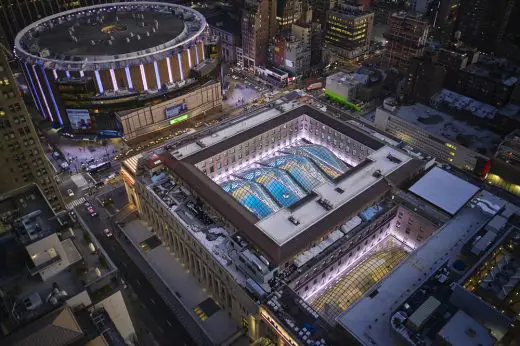
photo © Lucas Blair Simpson | Aaron Fedor © SOM
Location: The High Line, Midtown West / West Village, central west New York City, NY, USA
New York City Architecture
Contemporary New York Buildings
Manhattan Architectural Designs – chronological list
New York City Architecture Tours by e-architect
Il Makiage pavilion
Design: Zaha Hadid Architects
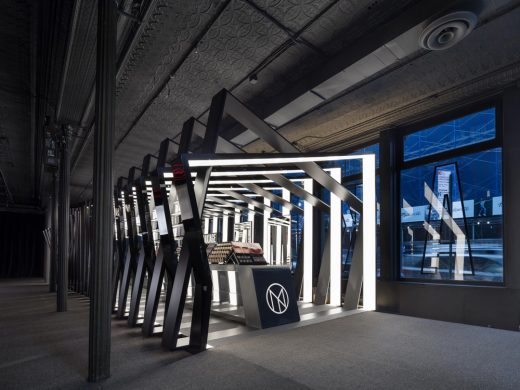
photograph : Paul Warchol
Il Makiage pavilion by Zaha Hadid
45 Park Place, Tribeca, Lower Manhattan
Design: SOMA Architects ; AOR: Ismael Leyva
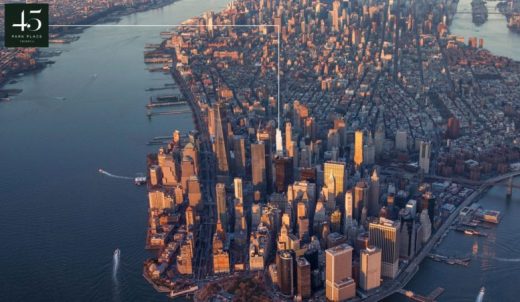
rendering : Williams New York
45 Park Place Tower
432 Park Avenue Skyscraper
Design: Rafael Viñoly Architects
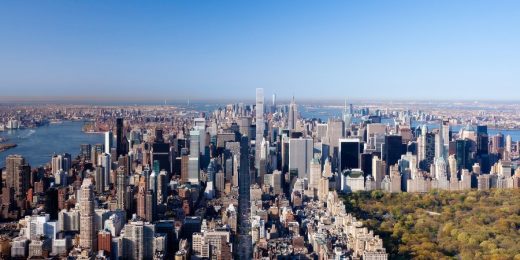
image © dbox for CIM Group & Macklowe Properties
432 Park Avenue Tower New York
High Line Wins Urban Design Prize
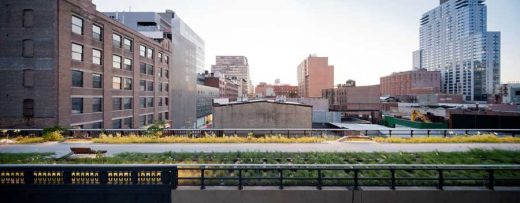
photo © Iwan Baan
Prize for The High Line Park
Comments for the Architecture Needed To Be Liberated From Itself – video interview with James Wines by architecture critic Vladimir Belogolovsky about SITE (Sculpture In The Environment) USA page welcome.

